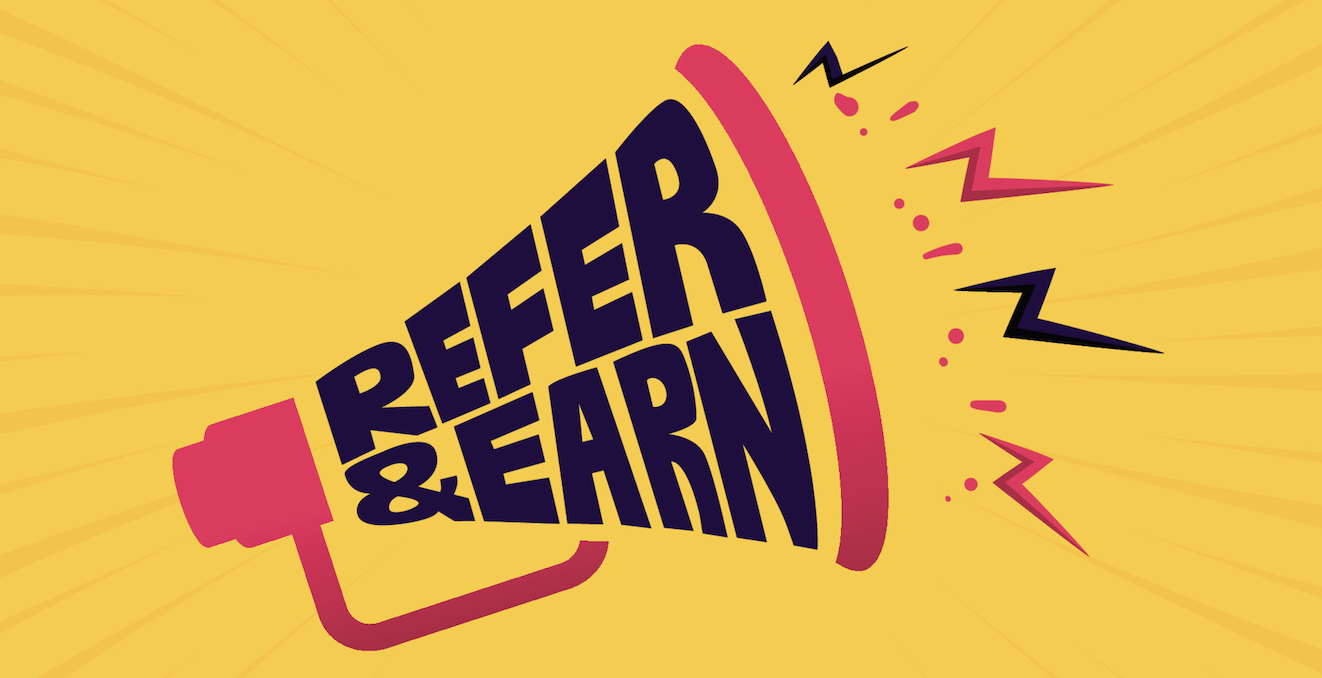There are so many different ways to promote your business in front of new and different people. Some promotion tactics may be more expensive or time-consuming than others depending on which goals your business is wanting to achieve.
Using referral programs leverages your current customer base and creates a more trustworthy form of advertising. There are many benefits that boost your business with an effective referral program. The following blog takes a deep dive into how a referral program works and the benefits that come alongside it!
What Is a Referral Program?
A referral program is a word of mouth marketing tactic that encourages customers to advocate on behalf of your company. This means existing customers would share their positive experiences about your brand to any of their colleagues or friends. There are also ways to incentivize referral programs by offering a discount, swag, gift cards or upgrades to customers who made referrals.
Referral programs offer a cost-effective marketing strategy. Instead of spending significant resources on advertising and other promotional activities, businesses can leverage the goodwill of their existing customers to spread the word about their products or services. This can lead to a higher return on investment (ROI) compared to traditional marketing efforts.
Referral programs are designed to benefit both the referrer and the referred customer by providing incentives or rewards for successful referrals. This mutually beneficial approach encourages active participation and maximizes the program’s effectiveness in achieving its goals.
The purpose of a referral program is to attract new business. This valuable tactic creates a more trusted form of marketing. Using this tactic promotes brand awareness and makes a first impression for those who may be unfamiliar with your company. This also leverages authenticity when word of mouth marketing is happening about your business.

How Does a Referral Program Work?
When executing a referral program, it is important to understand what your company is trying to achieve. The first thing that should be established are the goals of the program. For example, a goal could look like increasing the number of impressions or leads, gaining a bigger audience on social media, or growing revenue. Having these in place will set your team up for the correct messaging and allows for evaluating metrics.
If you would like incentives to be included, those need to be established as well before sending any messaging to customers about the referral program. Incentives are given to current customers who make referrals about your company to their colleagues or friends. Some examples of this could be giving customers discounts, giveaways, swag and more! Incentives are a way to motivate your current customer base to spread the word and it also creates more of a loyal consumer relationship base.
The second thing to take care of is establishing a list of customer referral sources. Keep in mind, these would be your happy customers who you believe would have positive things to say about your company. These people will be advocating for your product or service. Having a list in place and a way to contact them about the referral program is important to have in place before you start messaging.
The third concept to take into consideration is designing the messaging for your list of customers. Having a clear way of communicating how the program will operate and what the requirements are will better help your customers. For example, some messages will include the rules, how to earn incentives, and a thank you for their efforts.
The platform used for messaging will determine the deliverance. For example, an email may be more informative and formal rather than a window pop-up. Scripting your message requires a team effort to execute clarification for those customers.
The fourth action to take upon is creating those resources and promoting your program. This can be emails, blogs, newsletters, landing pages, CTA’s, and more! Spreading the word about the program could bring in new potential customers. As this goes on, it can be beneficial to track the referrals and incentives given out so there is a proper way to analyze the program.
Benefits of a Referral Program:
When a referral program is successfully executed, there are many positive outcomes that can come out of it. There are ways that a business and the customer can gain satisfaction from executing referrals. For example, a customer will develop more respect and recognition while the business is receiving potential new revenue.
This form of marketing starts people off on a good foot with your company from the feedback they receive. Here are some benefits that your company can take advantage of when using a referral program:
- Multiply customer loyalty
- Identify best advocates
- Cost-effective advertising
- Increase brand awareness
- Simplified progress tracking
To maximize the benefits of a referral program, it’s important to design an incentive structure that provides value to both the referrer and the referred customer. Additionally, the program should be easy to understand, participate in, and track to ensure a smooth experience for all participants.
Referral programs have the potential to expand the business’s reach beyond its existing customer base. By incentivizing customers to refer others, the business can tap into new networks and target audiences that might not have been aware of the brand before. Implementing a referral program shows that the business values its customers and appreciates their support. We hope that this article provided some guidance for any potential referral programs your business may incorporate!




